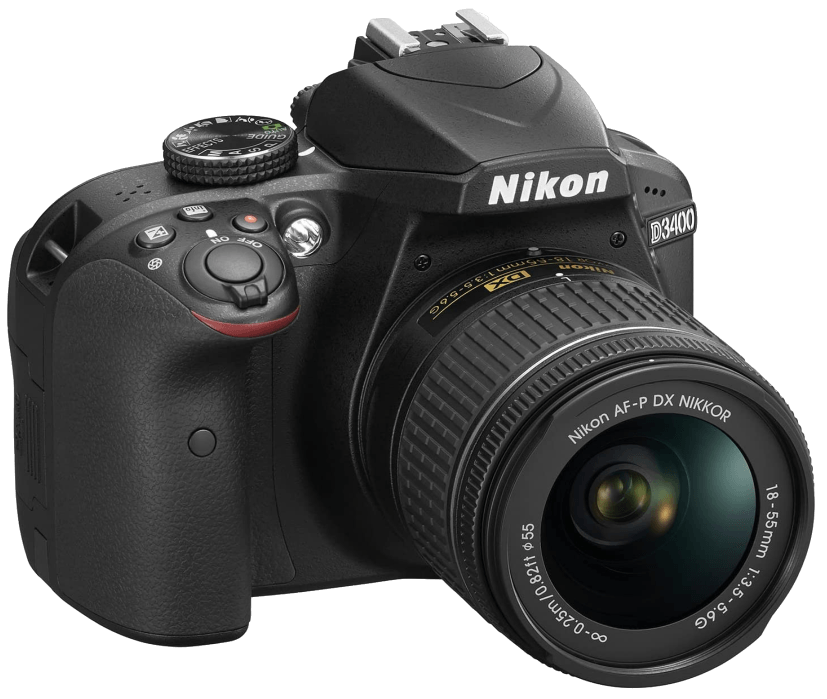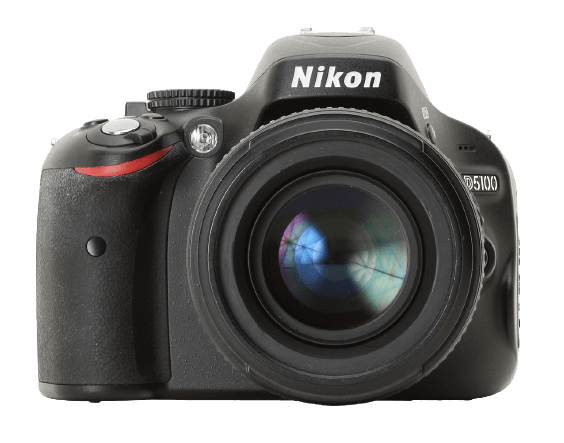Nikon D3400 vs D5100 Comparison
Nikon D3400

Nikon D5100

The Nikon D3400 takes the lead with a score of 61/100, while the Nikon D5100 trails behind at 49/100. Both cameras are DSLRs and share similar dimensions, with the D3400 measuring 124 x 98 x 76mm and the D5100 at 128 x 97 x 79mm. However, the D3400 is significantly lighter, weighing only 445g compared to the D5100’s 560g, making it more convenient to carry.
The D3400 has the advantage of being a more recent model, released in 2016, and is also more affordable with a launch price of $650 compared to the D5100’s $799. While the D5100 may have some features that outshine the D3400, the latter’s higher score, lighter weight, and lower price give it the edge in this comparison.
Nikon D3400 vs D5100 Overview and Optics
The Nikon D3400 emerges as the winner in the optics comparison with a score of 65/100, while the Nikon D5100 scores 52/100. Both cameras share some common specifications, such as the CMOS sensor type, APS-C sensor size, Nikon F DX lens mount, and the absence of image stabilization.
The D3400 surpasses the D5100 in several aspects. It has a higher megapixel count of 24.2 compared to the D5100’s 16.2, which allows for more detailed and sharper images. The D3400’s shooting speed is also faster at 5 frames per second, compared to the D5100’s 4 frames per second. This makes the D3400 better for capturing fast-moving subjects. Additionally, the D3400 is equipped with a more advanced Expeed 4 processor, which contributes to improved image processing and overall performance. The D3400’s sensor also has a higher DXOMARK score of 86, compared to the D5100’s score of 80, indicating better overall image quality.
On the other hand, the D5100 has some advantages over the D3400, though they are not enough to surpass its overall optics score. The D5100’s lower megapixel count can result in less noise in low-light situations, but the difference is not significant enough to outweigh the benefits of the D3400’s higher megapixel count.
Taking all these factors into account, the Nikon D3400 is the better choice for those seeking superior optics performance, as it offers higher image resolution, faster shooting speed, and better overall image quality. The Nikon D5100, while still a capable camera, falls short in comparison to the D3400 in terms of optics.
Nikon D3400 vs D5100 Video Performance
When comparing the video capabilities of the Nikon D3400 and the Nikon D5100, it is important to note that the Nikon D5100 does not have video functionality. Therefore, this comparison will focus on the video capabilities of the Nikon D3400.
The Nikon D3400 has a video score of 56 out of 100. It is capable of recording Full HD video with a maximum resolution of 1920 x 1080. The camera can record video at a maximum frame rate of 60 frames per second, providing smooth and clear footage. However, the Nikon D3400 does not have built-in time-lapse functionality.
Given that the Nikon D5100 lacks video capabilities, the Nikon D3400 is the clear choice for those seeking a camera with video recording features. Its Full HD video resolution and 60fps frame rate ensure high-quality footage, despite the absence of built-in time-lapse functionality.
Nikon D3400 vs D5100 Features and Benefits
The Nikon D3400 comes out ahead with a feature score of 54/100, compared to the Nikon D5100’s 41/100. Both cameras share some common specifications, such as a 3-inch screen size and a screen resolution of 921,000 dots. Neither camera has a touchscreen, GPS, or WIFI. However, there are differences that set them apart.
The Nikon D3400’s higher feature score is due to its Bluetooth capability. This feature allows users to easily transfer photos to other devices and provides a more convenient experience. Additionally, the Nikon D3400 is a newer model, which may contribute to its higher score.
On the other hand, the Nikon D5100 has a flip screen, which the D3400 lacks. This feature is useful for taking photos from different angles and positions, providing more flexibility and versatility to the user. However, it does not have Bluetooth, which may be a disadvantage for users who value quick and easy photo sharing.
Considering the differences between the two cameras, the Nikon D3400 is a better option for those who prioritize seamless photo sharing, while the Nikon D5100 is more suitable for users who need a flip screen for added flexibility. Ultimately, the choice between these two cameras depends on the specific needs and preferences of the user.
Nikon D3400 vs D5100 Storage and Battery
The Nikon D5100 outperforms the Nikon D3400 in storage and battery, scoring 51 out of 100, compared to the D3400’s 45. Both cameras have one memory card slot and accept SD, SDHC, and SDXC memory cards. Neither camera offers USB charging capabilities.
The D5100’s superior battery life provides 2200 shots per charge, using the EN-EL14 battery type. This significantly surpasses the D3400’s 1200 shots per charge with its EN-EL14a battery. This advantage allows the D5100 users to capture more photos without the need for frequent battery replacements or recharging.
The D3400, however, does not offer any notable advantages in storage and battery over the D5100. Considering these aspects, the Nikon D5100 proves to be the better choice for photographers who prioritize longer battery life and reliable storage. The Nikon D3400, while still a capable camera, falls short in these particular areas compared to its counterpart.
Nikon D3400 vs D5100 – Our Verdict
Are you still undecided about which camera is right for you? Have a look at these popular comparisons that feature the Nikon D3400 or the Nikon D5100:
